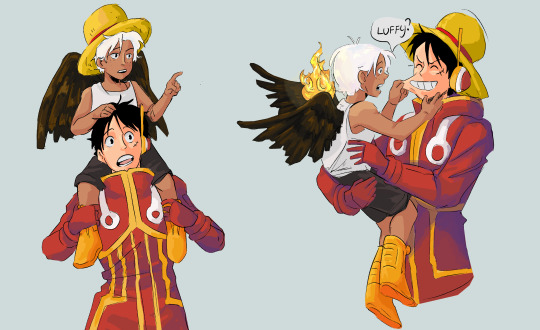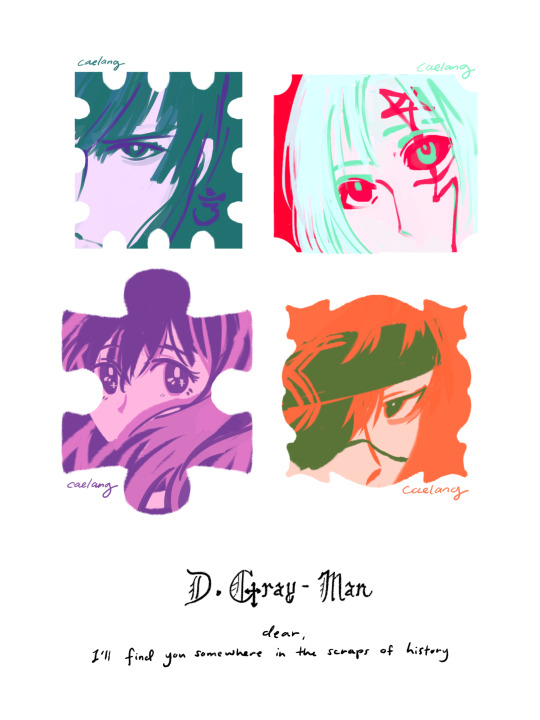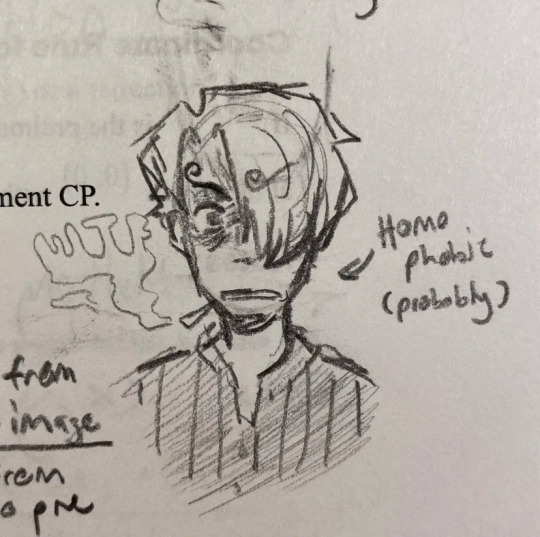#old school d&d
Explore tagged Tumblr posts
Text

Glad our D&D game is online so that we didn't have to miss out. We had to cut it a bit short due to the DM also having respiratory ick, but it was a nice break.
20 notes
·
View notes
Text

#mind flayer#illithid#d&d monster#d&d memes#ad&d 1e#ttrpg#d&d#dungeons and dragons#ttrpg memes#old school renaissance#osr#ad&d#ttrpg community#ttrpg art#d&d art#old school d&d#old school d&d art
39 notes
·
View notes
Text
youtube
The Real Reason Modern D&D5e Is So Much Easier
#dnd#RPG#Dungeons and dragons#fantasy world#dungeon master#dungeons & dragons#wizards of the coast#old school revival#dungeon master tips#dungeon master for beginners#dnd campaigns#hardstyle old school revival#1e versus 5e#dnd 5e#dnd rules explained#dnd rules for dm#dnd rules school#dnd rules for beginners#dnd rules 5e#1st edition vs 5th edition#deep dive dnd#d&d deep dive#is 5e even d&d#basic dnd#osr dnd#old school d&d#basic dnd rules#basic d&d#Youtube
2 notes
·
View notes
Text
Read-list for an "old school D&D" fantasy (plus bonus)
This is a remake of an earlier post of mine, that I decided to update (some additional books were suggested to me, others I found out about later).
This is a reading-list of various literary works that heavily inspired or were heavily used in the creation of the first editons of Dungeons and Dragons - and thus, reading them will allow you to plunge back into what the original D&D was meant to look what/what it tried to emulate.
J.R.R. Tolkien's "The Lord of the Rings" and "The Hobbit". No surprise here, Tolkien's works were the start of modern fantasy and thus the main source of old-school D&D. In fact, D&D was originally created to be just a Lord of the Rings role-playing game - or to be precise a LotR wargame. This was the original intention. Which is why, quite famously, the very first version of D&D included elements such as the hobbits, the mithril and the balrogs. And when the Tolkien Estate pointed out the consequences of what was plagiarism, D&D changed these concepts to... "halflings", "mithral" and "balors". The only Tolkien-element D&D could preserve vaguely unchanged were the orcs, because the Tolkien Estate could not prove Tolkien had invented the term "orc". But even beyond that, D&D's dwarfs and elves and ents (sorry, treants) and wights and rangers all were heavily inspired by Tolkien - the gods of the orcs even use symbols such as an "eye of fire" and a "white hand"...
Poul Anderson's "Three Hearts and Three Lions". Poul Anderson was quite influential on early 20th century fantasy, and this specific book influenced D&D in three ways. On one side, it was one of the two sources for the "Order versus Chaos" conflict of D&D (the other being Moorcock). On the other the D&D trolls were inspired by the Three Hearts and Three Lion trolls. And finally the Paladin class was inspired by Anderson's Holger Carlsen character (the same way the Ranger was Tolkien's Aragorn). [This book also seems to have had some influence over the Fey of D&D?]
Michael Moorcock's "The Elric Saga". With Anderson's work, it was the other main source of the Order vs Chaos, Lawful vs Chaotic division of the D&D game. It also served as the main inspiration behind the D&D Drows, due to the Elric Saga shaping the original image of "Dark Elves" in fantasy, through its Melnibonéan Empire. D&D also originally collected references to the Elric world - creating many variation of Elric's evil magical sword Stormbringer through a variety of cursed soul-drinking weapons.
Robert E. Howard's "Conan the Barbarian". The source of heroic-fantasy the same way Lord of the Rings influenced epic fantasy, the world of Conan was also a huge source of inspiration for D&D - the most obvious reference being the Barbarian class, shaped for those who wanted to play Conan.
Fritz Leiber's "Fafhrd and the Gray Mouser". Originally intended as a parody of the Conan-style heroic fantasy, but promptly becoming a serious and admired work that created its own sub-genre of fantasy (the "sword and sorcery" genre), they also were inspirational for the first editions of D&D. Sometimes it is indirect - the "Thief" or "Rogue" classes were inspired by Leiber's Gray Mouser character - other times it is MUCH more direct. For example, among the numerous pantheons you could choose to use in early D&D, one was the various gods of Newhon and the city of Lankhmar, the universe of Fafhrd and the Gray Mouser. And the fantasy trope of "Thieves' Guild" made famous partially by D&D was originally an invention of Leiber.
Jack Vance's The Dying Earth. This emblematic series of the "science-fantasy" genre offered to D&D its magic system, which is generally known as "vancian magic". It was Jack Vance who had the idea that a wizard had to learn/store spells in their mind, with a limited number of spells they could carry in their brain, and that once cast the spell had to be re-learned or restored. Several spells and items of early D&D were also directly taken from the Dying Earth books - the "prismatic spray" or the "ioun stones".
H.P. Lovecraft's "Cthulhu Mythos". No need to explain how Lovecraft's brand of eldritch horror and alien-fantasy shaped the creatures and deities of early D&D, to the point that early on the deities and monsters of the Cthulhu Mythos were part of the pantheons you could chose to use - listed alongside the Newhon gods of Leiber, or the gods of the Conan universe.
While not fantasy works, the most famous creations of Edgard Rice Burroughs - Tarzan on one hand, and John Carter of Mars on the other, were claImed by Gygax to have been very influential to his creation of D&D.
Another author Gygax mentionned as being a huge influence for D&D was Fletcher Pratt - through his Harold Shea fantasy series, about a main character being carried away in various magical and fantastical worlds very different from each other, in which he has to adapt himself to new settings and learn new rules to avoid dangers and threats... Sounds familiar? The idea of world-travelling might also have been inspired by the science-fiction series by P.J. Farmers' World of Tiers: the rules of travel in D&D between the various planes of reality seem to have been inspired by Farmers' own rules for dimension-travel.
One of the lesser known influences of D&D is the fantasy series "Kothar" by Gardner Fox: Gygax explicitely said that the idea of the "Lich" as a D&D monster came from Fox's Kothar series.
Not a book, but movies: the Sinbad movies of the mid 20th century were influential on early D&D. Various monsters and creatures referenced pictures such as "The 7th Voyage of Sinbad" or "The Golden Voyage of Sinbad".
"The House on the Borderlands" by William Hope Hodgson was explicitely referenced by Gygax's 1979 module "The Keep on the Borderlands", and it might have heavily influenced the original depiction of the D&D orcs as pig-men...
The Shannara series by Terry Brooks has also been pointed out as an influence on D&D - while not on the very first edition, elements of the Shannara world seem to have influenced later ones...
Mind you, this is but a fragment of a much longer list known as the "Appendix N" composed by Gygax, and that lists all the books and pieces of work he took inspiration from when designing D&D. Beyond the most famous works evoked above he also listed:
Poul Anderson's "The High Crusade" and "The Broken Sword"
John Bellairs' "The Face in the Frost"
Leigh Brackett's works
Fredric Browns' works
I evoked before Burrough's Mars series, but Gygax also listed his "Venus series" and his "Pellucidar series".
Lin Carter's "World End" series
L. Sprague de Camp's "Lest Darkness Fall" and "The Fallible Fiend" and "The Carnelian Cube"
August Derleth's continuation of the Cthulhu Mythos.
Lord Dunsany's writings, of course.
Gardner Fox's "Kyrik" series
Sterling Lanier's "Hiero's Journey"
A. Merritt's "Creep, Shadow, Creep", "Moon Pool" and "Dwellers in the Mirage"
Michael Moorcock's "Hawkmoon" series (which is technically part of the wider universe of which the Elric Saga is the central piece)
Andre Norton's works
Fletcher Pratt's "Blue Star"
Fred Saberhagen's "Changeling Earth"
Margaret St. Clair "The Shadow People" and "Sign of the Labrys"
Stanley Weinbaum's works
Manley Wade Wellman's works
Jack Williamson's works
Roger Zelazny's "Amber" series, and "Jack of Shadows".
In 2007, Gygax even updated his Appendix N with a handful of new titles reflecting elements added to later editions of D&D:
Sterling Lanier's "The Unforsaken hiero"
Piers Anthony's "Split Infinity" series
And of course, Terry Pratchett's Discworld series
And since this post is all about updates, I will also include a list of works that were used as inspiration for current day/modern D&D - especially the fifth edition. Like that, you'll have the evolution of "old school D&D versus new school D&D". This list is taken from fragments here and there of interviews given by Mike Mearls, the Appendix E "Inspirational Reads" of the fifth edition, and Rodney Thompson's interviews.
Appendix E replaces several elements Gygax talked about in interviews or in his Appendix N: Leiber's work, Burroughs's Mars series, Howard's Conan, etc...
Appendix E adds among other things China Mieville's "Perdido Street Station", and Elizabeth Bear's "Range of Ghosts".
Mike Mearls said that what inspired him in his design work of modern D&D was Ursula LeGuin's "Earthsea" series, Patrick Rothfuss "The Name of the Wind", Saladin Ahmed "Throne of the Crescent Moon" and Octavia E. Butler's "The Parable of the Sower".
But Mearls also repeated several of the picks already used by Gygax. He invoked again The Elric Saga, and Roger Zelazny's Amber series, and Tolkien's Legendarium of course...
Rodney Thompson rather insisted on returning to the Anderson roots of the D&D fantasy: mostly "Three Heart and Three Lions", but also "The Broken Sword".
#fantasy#fantasy books#fantasy literature#d&d#old school d&d#dungeons and dragons#modern dungeons and dragons#inspiration#gygax#mike mearls#rodney thompson#appendix n#modern d&d#read list#reading list#science-fiction#science-fantasy
26 notes
·
View notes
Text
I totally forgot to include one of my favorite things about the way old D&D editions were written in my post about the subject, but I'm not going to tag this little tidbit onto that monstrosity. So here goes!
Book II: Monsters & Treasure helpfully informs us that vampires are properly of the undead class rather than lycanthropes.
Apparently there was some previous confusion about that, good thing they clarified it.
20 notes
·
View notes
Text

>A vampire salaryman appears from the shadows!
>["No, don't run!, I've only got an hour for lunch!"]
If you like this illustration please follow my art blog to see the rest of my work! Art blog: @jimenez-madrid-art
#weirdoshutin#dnd monster#dungeons & dragons#dnd#old school d&d#character design#d&d art#d&d 5e#d&d oc#vampire#vampirism#salaryman
3 notes
·
View notes
Photo

@modmad gets it.

Mind flayer using psionic attack, by Tom Wham from the AD&D Monster Manual, TSR, 1977.
#d&d art#d&d#old school d&d#dungeons and dragons#monty python#so many would-be “old school” gamers don't acknowledge the HUGE influence that MP&THG had on actual old-school gaming#grognards
38K notes
·
View notes
Text

necromancer's lure
#artists on tumblr#starting the new year with some good old lesbians#what if the undead you summoned was really hot tho#then what#they didn't prepare you for this in wizard school#i hope the year has started gently for you all#i'm staying sane by petting our bunnies a lot#holding onto the slowly lightening days#and playing lots of d&d and pathfinder
8K notes
·
View notes
Text

+ sketchy ww

#trigun#trigun maximum#vash the stampede#nicholas d. wolfwood#my art#was going for something like old school anime for vash..
1K notes
·
View notes
Text

What if Luffy found someone else at Egghead?
#this has been plaguing me#finally done with school this semester#one piece#monkey d. luffy#portgas d ace#one piece fan art#one piece seraphim#seraphim ace#you all will probably get more of this soon#Yes he does have Ace's memories#but only up to 10 years old#this one is right after Sabo died#egghead
3K notes
·
View notes
Text
#dungeons and dragons polls#dungeons and dragons#old school d&d#d&d#dnd#ad&d 1e#dnd1e#ad&d 2e#dnd2e#d&d 3.5#dnd 3e#dnd 3.5#d&d 4e#dnd 4e#d&d 5th edition#d&d 5e#dnd5e#dnd 5th edition#osr#old school renaissance#ttrpg#ad&d#ttrpg community#d&d polls#dnd poll#ttrpg polls#fantasy rpg#rpg
22 notes
·
View notes
Text

One day we will be nothing but remains found in history…
#quick sketches I did a while back#can’t believe it’s gonna be 20 years soon#I’ve been into dgm since first year of junior high school and I#I am so old hahahah#this series is so life changing for me#the reason why I’m posting Art online too TT#thank you hoshino sensei for this beautiful series aaaaaaa#dgm#d gray man#d.gray man#allen walker#kanda yuu#lenalee lee#lavi#dgm lavi#dgm allen#dgm kanda#dgm lenalee
793 notes
·
View notes
Text

concept art from the ouran manga fanbook (translated by me)
#ouran#ohshc#ouran high school host club#(for archival purposes)#the ouran anime is officially 18 years old today so I'd though i would upload this#also the manga's last volume was released today too#so i just call this ouran's anniversary because it basically is#happy ouran anniversary month :]#(still working on the audio drama. I'm crafting a neocities webpage for it. stay tuned :D)
138 notes
·
View notes
Text
D&D and TTRPG, improving people's lives since 1974.
The "dnd will make you a Satanist" thing is extremely funny to me because part of my path to becoming pagan was incorporating Hel (my first an primary deity) into my motw campaign.
#satanic panic#paganism#pagan#motw#norse hel#hel#hela#children of loki#norse mythology#scandinavian mythology#norse paganism#advanced dungeons and dragons#dungeons and dragons#dnd#dnd1e#d&d#old school d&d#ad&d 1e#ttrpg community#ttrpg#ttrpg stuff#indie ttrpg
32 notes
·
View notes
Text


Sanji being homophobic and gay as shit is either the funniest thing to me or makes me fall to the floor in agonizing heart wrenching pain

also zosan bc i think that makes this funnier
#school doodles#theyre old tho#like a few months old#black leg sanji#roronoa zoro#monkey d. luffy#zolu#zosan#zolusan#woke piece#art
510 notes
·
View notes
Text

>A goblin crab-rider blocks your path!
>["Be still Rosinante... I've got them on my sight..."]
If you like this illustration please follow my art blog to see the rest of my work! Art blog: @jimenez-madrid-art
#weirdoshutin#my art#digital illustration#old school d&d#old school rpg#goblin#goblin art#fantasy art#retro fantasy#dnd#dnd art#dnd monster
2 notes
·
View notes